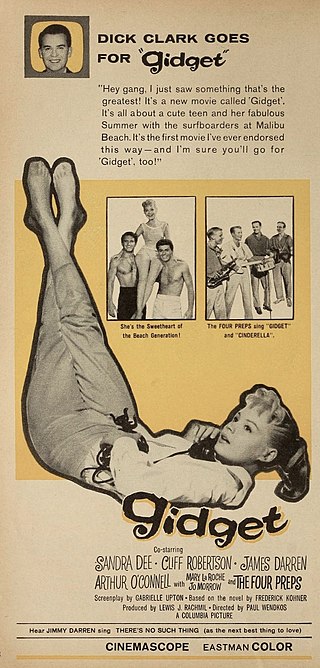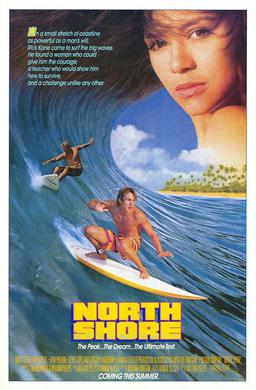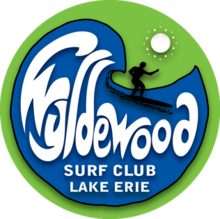
Duke Paoa Kahinu Mokoe Hulikohola Kahanamoku was a Hawaiian competition swimmer who popularized the sport of surfing. A Native Hawaiian, he was born to a minor noble family less than three years before the overthrow of the Hawaiian Kingdom. He lived to see the territory's admission as a state, and became a United States citizen. He was a five-time Olympic medalist in swimming, winning medals in 1912, 1920 and 1924.

Surfing is a surface water sport in which an individual, a surfer, uses a board to ride on the forward section, or face, of a moving wave of water, which usually carries the surfer towards the shore. Waves suitable for surfing are primarily found on ocean shores, but can also be found in standing waves in the open ocean, in lakes, in rivers in the form of a tidal bore, or in wave pools.

Bethany Meilani Hamilton is an American professional surfer and writer who survived a 2003 shark attack in which her left arm was bitten off and who ultimately returned to professional surfing. She wrote about her experience in the 2004 autobiography, Soul Surfer: A True Story of Faith, Family, and Fighting to Get Back on the Board, which was adapted into the 2011 feature film, Soul Surfer, in which she attributes her strength to her Christian faith. Hamilton was also the subject of a 2018 documentary, Bethany Hamilton: Unstoppable, which discusses her marriage to Adam Dirks and how marriage and motherhood have affected her professional surfing career.

Laird John Hamilton is an American big-wave surfer, co-inventor of tow-in surfing, and an occasional fashion and action-sports model and actor. He is married to Gabrielle Reece, a professional volleyball player, television personality, and model.

Big wave surfing is a discipline within surfing in which experienced surfers paddle into, or are towed into, waves which are at least 20 feet high, on surf boards known as "guns" or towboards. Sizes of the board needed to successfully surf these waves vary by the size of the wave as well as the technique the surfer uses to reach the wave. A larger, longer board allows a rider to paddle fast enough to catch the wave and has the advantage of being more stable, but it also limits maneuverability and surfing speed.

Waveskis, previously known as "Paddle Ski,” is a surfboard where the rider 'sits' on top of the surfboard. Waveski surfing is a dynamic sport combining paddle power with the manoeuvrability and performance of a surfboard. A Waveski resembles a larger volume surfboard, with the addition of a hollowed out seat with seat belt, foot straps and double ended paddle enabling the rider to remain attached to the board for maneuvers and to 'Eskimo roll' if overturned. The waveski rider or waveski surfer uses a double-ended paddle for paddling motion while seated in the waveski. To turn the rider uses his weight to lean on the side rails and paddle to pivot or propel the board up the wave. The sport is categorized under the International Canoe Federation, but is not an Olympic Sport at this time. The discipline does however hold a biennial World championship events, he history of which can be found here https://en.wikipedia.org/wiki/World_Waveski_Surfing_Titles .The next world championship event will beheld at the Nahoon Reef, outside the town of East London in South Africa
Greg Noll was an American pioneer of big wave surfing and a prominent longboard shaper. Nicknamed "Da Bull" by Phil Edwards in reference to his physique and way of charging down the face of a wave, he was on the U.S. lifeguard team that introduced Malibu boards to Australia around the time of the 1956 Summer Olympics in Melbourne. He produced a "legendary" series of five Search for Surf films.

Surf movies fall into three distinct genres:

Surf culture includes the people, language, fashion, and lifestyle surrounding the sport of surfing. The history of surfing began with the ancient Polynesians. That initial culture directly influenced modern surfing, which began to flourish and evolve in the early 20th century, with its popularity peaking during the 1950s and 1960s. It has affected music, fashion, literature, film, art, and youth jargon in popular culture. The number of surfers throughout the world continues to increase as the culture spreads.

North Shore is a 1987 American action drama surf film about Rick Kane, a young surfer from a wave tank in Arizona, who heads to surf the season on the North Shore of Oʻahu to see if he has the skills to cut it as a pro surfer. As he progresses on his journey, he learns the qualities he possesses are not going to pull him through alone.

Peʻahi is a place on the north shore of the island of Maui in the U.S. state of Hawaii. It has lent its name to a big wave surfing break, also known as Jaws.
The riding of waves has likely existed since humans began swimming in the ocean. In this sense, bodysurfing is the oldest type of wave-catching. Archaeological evidence suggests that ancient cultures of Peru surfed on reed watercraft for fishing and recreation up to five thousand years ago. Standing up on what is now called a surfboard is a relatively recent innovation developed by the Polynesians. The influences for modern surfing can be directly traced to the surfers of pre-contact Hawaii.

The Great Lakes Seaway Trail, formerly named and commonly known as the Seaway Trail, is a 518-mile (834 km) National Scenic Byway in the northeastern United States, mostly contained in New York but with a small segment in Pennsylvania. The trail consists of a series of designated roads and highways that travel along the Saint Lawrence Seaway—specifically, Lake Erie, the Niagara River, Lake Ontario, and the Saint Lawrence River. It begins at the Ohio state line in rural Erie County, Pennsylvania, and travels through several cities and villages before ending at the Seaway International Bridge northeast of the village of Massena in St. Lawrence County, New York. It is maintained by the non-profit Seaway Trail, Inc.
The Phantom Surfers are a surf rock band formed in 1988.
Albert "Rabbit" Kekai was an American professional surfer and one of the original innovators of modern surfing. He was a dominant master of the sport in the 1930s, 1940s, and 1950s, and was also a winner of the Peruvian and Makaha International titles.

Lake surfing is surfing on any lake with sufficient surface area for wind to produce waves. As with ocean surfing, ideal wave conditions are when the wind switches offshore. However, when this occurs over a lake the waves generated by previous onshore wind subside relatively quickly. This means lake surfers have a shorter window of opportunity to surf ideal waves. Lake surfers are often out during and experiencing the same storm that creates the waves whereas ocean surfers are more often surfing on swell produced by storms hundreds of miles away and that may have taken days to reach shore. In addition to making it more difficult to manage surfboards, high winds can make the face of a wave and water surface rough. Increased wave frequency due to shorter fetch results in less rest between waves and sets of waves. This can make it necessary to paddle out through waves because there may not be a long enough pause between sets to paddle out between them.

Standup paddleboarding (SUP) is a water sport born from surfing with modern roots in Hawaii. Standup paddleboarders stand on boards that are floating on the water, and use a paddle to propel themselves through the water. The sport was documented in a 2013 report that identified it as the outdoor sporting activity with the most first-time participants in the United States that year. Variations include flat water paddling, racing, surfing, whitewater SUP, yoga, and fishing.
The U.S. Open of Surfing is a week-long surfing competition held annually during the summer in Huntington Beach, California. Generally held on the south side of the Huntington Beach Pier, the U.S. Open is part of the qualification process for the World Surf League and is a WSL QS 10,000 event. It is the largest surfing competition in the world. It has been owned by IMG since 2000.
Out of Place is a surfing documentary directed by Scott Ditzenberger and Darrin McDonald that follows the lives of several lake surfers in Cleveland, Ohio. While Lake Erie does not offer the quality of waves they would prefer, business commitments, family, and friends keep them from moving. As the best waves occur in the winter, the surfers often experience freezing conditions including during a snowbound Great Lakes Eastern Surfing Association competition featured in the film.

Surfing in the United States is a popular hobby in coastal areas, and more recently due to the invention of wave pools, inland regions of the country. It contributes to a lifestyle and culture in which millions participate and which millions more have an interest. USA surfing is the governing body for the sport of surfing in the United States, with surf leagues such as the World Surf League available in the country. Surfing can be traced back to 17th Century Hawaii and has evolved over time into the professional sport it is today, with surfing being included for the first time in the 2020 Summer Olympics in Tokyo.















